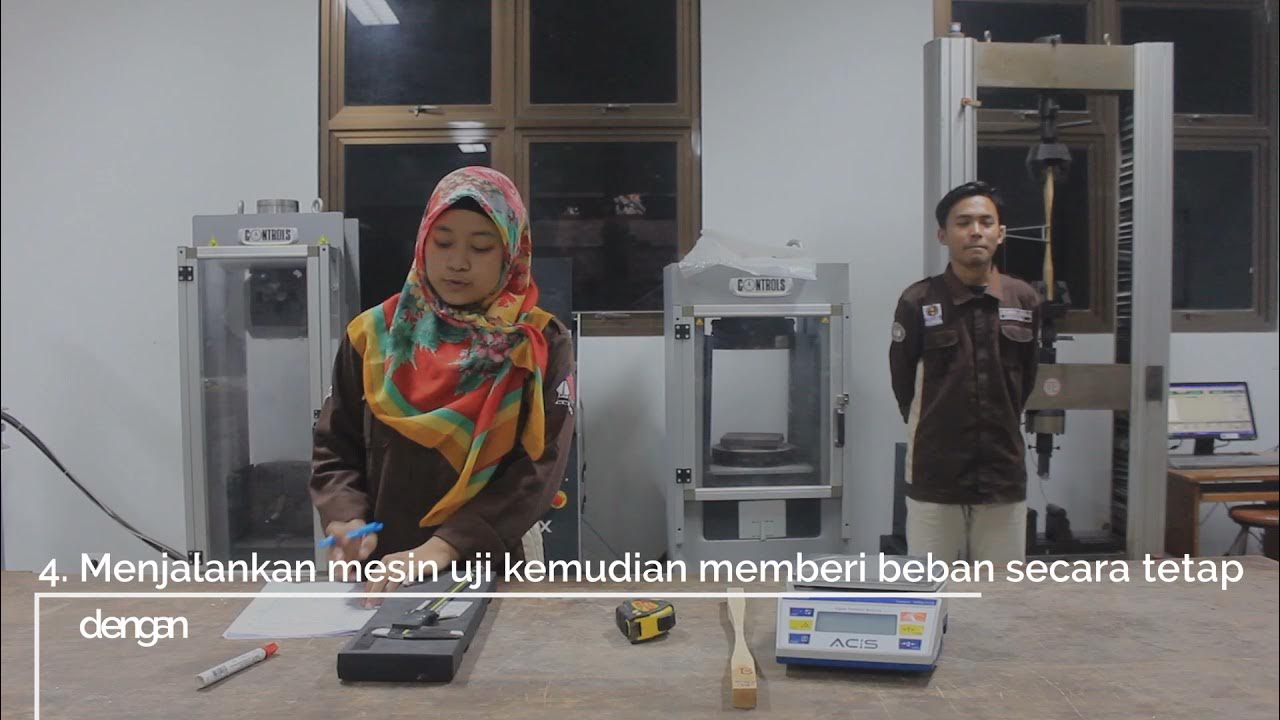Tensile Test (Uji Tarik)
Summary
TLDRThe video outlines the process of tensile testing, a destructive test used to assess the strength of materials. It begins with an introduction to the necessary tools and materials, including grips, calipers, and digital scales. The testing procedure involves identifying specimens, measuring initial dimensions, and preparing the testing machine. After applying continuous load until the material breaks, final measurements are taken to analyze results. Key calculations for tensile strength and elongation are highlighted, making this informative content essential for understanding material properties and testing protocols.
Takeaways
- 😀 Tensile testing is a destructive test used to determine the strength of materials.
- 😀 The primary tools used in the test include clamps, calipers, hammers, measuring tapes, and a digital scale.
- 😀 The first step in tensile testing is to identify the specimen by marking one side to avoid confusion.
- 😀 Dimensions of the specimen, such as thickness and width, must be measured and recorded before starting the test.
- 😀 For materials like rebar and round bars, specific tools (clamps) are used to hold the specimens in place.
- 😀 A tensile testing machine is used to apply load on the specimen until failure occurs.
- 😀 The test process involves gradually increasing the load on the specimen while recording measurements on a millimeter grid paper.
- 😀 The key parameters measured during the test include yield strength, maximum strength (ultimate), and elongation.
- 😀 After the specimen breaks, post-test measurements like final length and diameter are recorded for further analysis.
- 😀 The data obtained from the tensile test allows calculation of material properties, such as yield strength and elongation percentage.
- 😀 The process concludes by ensuring the specimen is properly removed from the machine, and the final measurements are documented.
Q & A
What is tensile testing?
-Tensile testing is a destructive test used to evaluate the strength of materials by subjecting them to tension until they fail.
What tools are used in tensile testing?
-The tools include grips for holding specimens, calipers for measurement, a digital balance for weighing, and a machine for applying tensile loads.
How do you identify the specimens before testing?
-Specimens are identified by marking one side with a codification to prevent mix-ups during the testing process.
What dimensions are measured for flat plate specimens?
-The width, thickness, and length of the flat plate specimens are measured before testing.
How is the effective diameter of rebar calculated?
-The effective diameter is calculated using the formula: sqrt(4 * mass / (pi * length)), where 'mass' refers to the weight of the rebar.
What is the significance of using a digital balance?
-A digital balance allows for accurate measurement of the mass of specimens, ensuring precise calculations of strength and dimensions.
What steps are taken to prepare the tensile testing machine?
-The machine is powered on, the load capacity is set, and the specimen is securely placed and adjusted in the machine for testing.
What is recorded during the tensile test?
-The load at which the specimen fails, as well as any relevant measurements of the specimen before and after testing, are recorded.
How is yield strength calculated?
-Yield strength is calculated by dividing the load at yield by the original cross-sectional area of the specimen.
What happens to the specimen during the test?
-The specimen is subjected to increasing tension until it reaches its breaking point, which is visually recorded on the millimeter paper attached to the machine.
Outlines

This section is available to paid users only. Please upgrade to access this part.
Upgrade NowMindmap

This section is available to paid users only. Please upgrade to access this part.
Upgrade NowKeywords

This section is available to paid users only. Please upgrade to access this part.
Upgrade NowHighlights

This section is available to paid users only. Please upgrade to access this part.
Upgrade NowTranscripts

This section is available to paid users only. Please upgrade to access this part.
Upgrade Now5.0 / 5 (0 votes)





